"As a boy I believed I could make myself invisible. I'm not sure that I ever could, but I certainly had the ability to pass unnoticed." -Terence Stamp
When we look up at the night sky from a dark location here on Earth, somewhere around 6,000 stars greet you on a clear night.
This is just a tiny fraction of the hundreds of billions of stars that actually make up our galaxy, which makes sense, considering how large our galaxy is and how vast the distances between the stars is. You'd probably think that the stars we can see are pretty representative of the closest stars to us, but the story is actually much richer than that.
 Image credit: Richard Powell of http://www.atlasoftheuniverse.com/.
Image credit: Richard Powell of http://www.atlasoftheuniverse.com/.
If you took a star like the Sun and moved it ten times as far away, it would appear just one-hundredth as bright. But if you took a star that was the mass of the Sun and compared it with a star that was ten times as massive as the Sun, the more massive one would be about five thousand times brighter! The most massive stars -- more than 100 times as massive as our own -- can outshine the Sun by literally millions of times.
In other words, the stars you see are a combination of stars that are relatively close to us, but moreso stars that are very bright intrinsically. In fact, of the ten nearest star systems to us, only two of them are visible to the naked eye!
Take the closest star to us, for example: Proxima Centauri. You've probably heard of the Alpha Centauri system, a binary pair of stars just 4.3 light years away. But even closer lies Proxima Centauri, a red dwarf star that's just 12% the mass of the Sun, and only 0.0056% as luminous in visible light. The photo below shows Alpha and Beta Centauri, the 3rd and 9th brightest star systems in the sky, along with Proxima Centauri, circled and pointed out.
That's the closest star to us, and it wasn't even discovered until 1915, less than 100 years ago. And, as a hydrogen-fusing, main sequence star, it's not even close to the dimmest object out there.
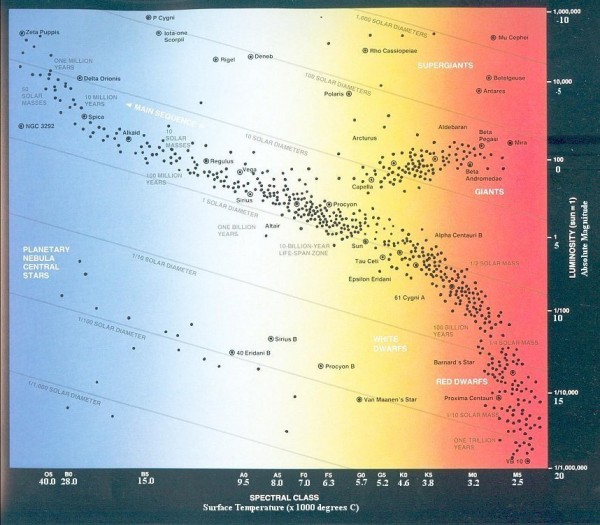 Image credit: Hertzsprung-Russell diagram retrieved from http://universe-review.ca/.
Image credit: Hertzsprung-Russell diagram retrieved from http://universe-review.ca/.
This is the "standard" Hertzsprung-Russell diagram, showing a huge variety of stars, ranging from the low-mass, cool, M-class red dwarfs (you can find Proxima Centauri among them) all the way up to the ultra-massive, bright blue O-class stars.
But this diagram cuts off stars that are even lower mass: too low in mass to fuse Hydrogen into Helium. Instead, they generate their light by fusing the trace amounts of deuterium they were born with into somewhat heavier elements, with some of them literally trillions of times less luminous than the Sun.
Known as brown dwarfs (even though they'd be faintly magenta to the naked eye), these things can be so cool that they give off practically no visible light, and need to be hunted in the infrared. Even today, only a few thousand (confirmed) are known, with the coolest one, WISE 1828+2650, having a temperature so low that -- at atmospheric pressure -- it couldn't even boil water!
WISE -- the Wide-field Infrared Survey Explorer -- is presently the best tool we have for finding these objects. Shown below is Ned Wright's graph of a standard Brown Dwarf spectrum, as well as the sensitivities of various space-based missions. As you can clearly see, until the James Webb Space Telescope comes along, WISE is the best instrument we have for finding these elusive objects.
And WISE has just really outdone itself, finding a pair of brown dwarfs just 6.5 light years away, making this the third-closest star system (if you count brown dwarfs as stars) to our Sun!
That's right -- once more, for emphasis -- we've only just now, in 2013, found the third-closest star system to us.
The pair -- known as WISE 1049-5319 -- was first observed by WISE back in 2010, but was very close to the plane of our galaxy. Because of how dense stars are in the galactic plane (where we are, too, incidentally), it's very difficult to detect faint sources. So this might lead you to ask:
If we can have a pair of brown dwarfs just 6.5 light years away, how many of them could possibly be out there in our galaxy?
In other words, we're sure that there are unseen lights right here in our own backyard. But how many of them could there be?
The best constraint we have comes from gravitational microlensing. That is, we don't directly observe-and-count the number of brown dwarfs to measure their density. I mean, we do, but we're sure that there are many that we're missing. The observe-and-count method gives us a lower limit on how many there could possibly be, but not an upper limit.
To get an upper limit, we observe a distant patch of sky, and each time a brown dwarf (or dimmer object) passes between us and the light source, it causes a characteristic brightening-and-unbrightening of the background light source we're observing.
These objects are generically known as MACHOs, or MAssive Compact Halos Objects. And they exist! But they exist in very small numbers, at least as a percentage-of-total-mass of our galaxy.
This was once a legitimate candidate for dark matter, but thanks to groups of MACHO-hunters, we know for certain that there aren't enough of them to account for the missing mass of the Universe.
What this work has done is effective rule out that dark matter could be explained by MACHOs with a mass between 0.00000001 Solar Masses (about the mass of the Moon) to 100 Solar Masses (which rules out black holes of these masses, too).
Now this doesn't mean that brown dwarfs couldn't be a substantial fraction of the baryons in our galaxy; there could be -- in theory -- as much mass locked up in these brown dwarfs as there are in all other known stars, combined, or there could be just a few per thousand cubic light-years.
The future James Webb Space Telescope should allow us to measure just how many brown dwarfs are here in our local neighborhood, and then we'll better know exactly what our local Universe looks like!
But isn't that amazing? More than 400 years after the invention of the telescope, we still don't know how many (and what types) of stars there are just in our own backyard in space. There are unseen lights in our own backyard, and cooler, lower mass brown dwarfs than these could, in principle, be even closer than our nearest star! (Although not likely to be as close as the once-hypothesized Nemesis; WISE has taken care of that!)
We're still coming to terms with the Universe around us, on both the largest scales and also the smallest. Keep your eyes on the skies, and remember, there's a whole Universe out there, and even with perfect skies, most of it is invisible to us!
- Log in to post comments

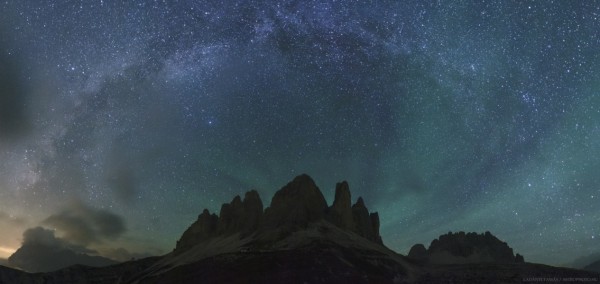
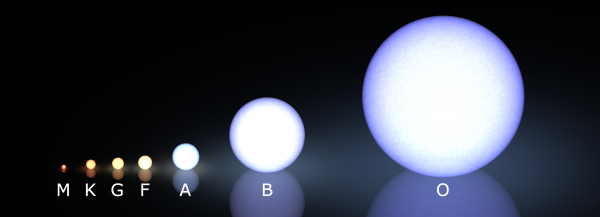
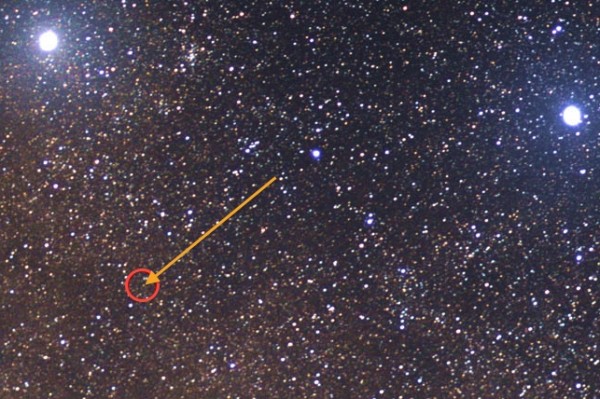

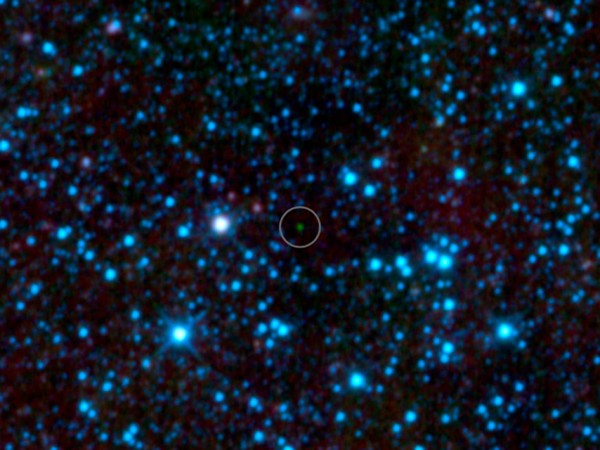

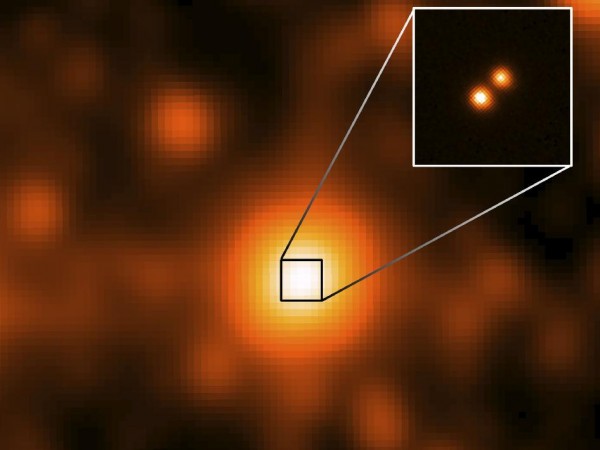
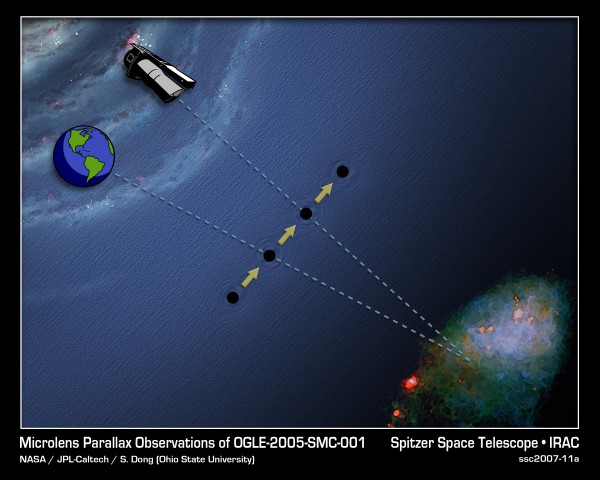

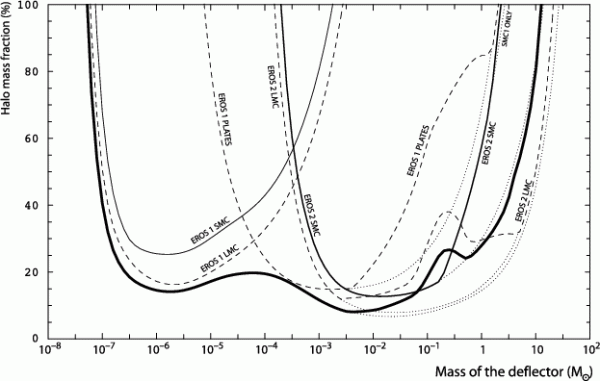
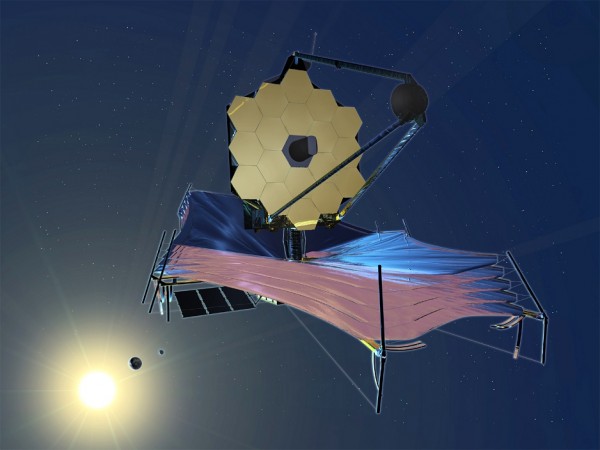
Doesn't surprise me at all that despite having telescopes for 400 years we have detected so few. After all, a telescope is a light capturing device, and with the low luminosities involved it stands to reason that we have seen very few. However, it is very exciting to think about how much baryonic matter is actually out there. Are we expecting this new upper limit to have any significant change for the abundance of dark matter or does this upper limit not affect the total density?
OK, so you've ruled out brown dwarfs as a candidate for dark matter, but couldn't there be something else that accounts for the missing mass that we just don't know about yet?
Isn't this a more rational explanation than postulating that most of the universe's mass consists of exotic matter that has never been detected and whose properties are unknown? Why does dark matter have to be exotic? Why can't it be mundane?
Steve Morris,
It's precisely because we understand ordinary, baryonic matter very well that we can rule it out. If there were enough non-luminous, baryonic matter to account for all of the mass of dark matter that has been determined to exist, there would be observable effects. These effects are not observed, hence the dark matter cannot be ordinary, baryonic matter, but must instead be something else.
An exotic dark matter is postulated because it accounts well for all observable phenomena. The only other option is modified theories of gravity. Some of these account better for some phenomena, but these do poorly at explaining others. Exotic dark matter may turn out to be wrong, but for right now it's the best explanation of what we observe.
Well, not enough dark baryonic matter to explain the observations by themselves.
There may be a lot of dark baryonic matter out there. It just can't be enough to cause the rotation figures by themselves.
It would have been polite to actually link to the discovery paper or announcement. Maybe even give credit to the person who did the hard work of finding and confirming the objects.
Steinn,
I did link to the NASA announcement: http://www.nasa.gov/mission_pages/WISE/news/wise20130311.html
It's under the link "third-closest star system" above.
Cool. Thanks.
"Isn’t this a more rational explanation than postulating that most of the universe’s mass consists of exotic matter that has never been detected and whose properties are unknown? Why does dark matter have to be exotic? Why can’t it be mundane?"
Are neutrinos exotic? We know they exist, and in fact while you read this sentence trillions of them have passed through your eyeball. Then through the rest of the planet. They do this because they exhibit the most important property for Dark Matter -- they do not interact electromagnetically, and so normal matter is almost entirely empty space to them. They only interact via the weak nuclear force, so interactions are rare. Like really rare, as in the mean free path of a neutrino in lead is ~1 light year.
Neutrinos can't be the Dark Matter particle because they're too light and thus too fast. But they are a form of non-baryonic matter exhibiting the same "exotic" properties required of DM. So sure, the hypothetical DM particle is as yet unknown and undiscovered. But is it necessarily "exotic"? Only if you consider "neutrinos, but heavier" to be "exotic."
Either way, "normal" matter was of course the preferred explanation since it was the simplest. However that explanation has implications that were not borne out by observation. Regardless of how rational our hypothesis are, they must still bow to reality.
"There are more objects out there just like the ones we know, but as yet undiscovered." is a rational explanation, and even correct, but not sufficient to explain Dark Matter.
"There are more particles out there just like the ones we know, but heavier" seems pretty rational to me, and so far does a much better job of explaining.
Thanks for taking the time to reply. However, I am still struggling with DM. Why does it appear as halos or threads around the edges of galaxies? Surely this enormous amount of mass would tend to accumulate in the centres of galaxies, probably in supermassive black holes? Even a small amount of DM equivalent to the Earth's mass would very rapidly collapse in on itself to form a black hole, since there is no electromagnetic force to prevent it?
It's actually electromagnetic forces that causes accumulation of regular matter. Without friction to slow the particles down once they get more closely packed near the center of mass, they'd keep right on going until they're the same distance they started from, and so never clump up.
Imagine dropping a rock onto earth from a height of thousands of km. If the earth was a point mass, that rock would orbit that mass and not stop, but in reality that orbit passes through the earth and so the rock stops, adding to the mass of the earth. Now imagine it was a "rock" made of weakly (as in weak force) interacting particles. The earth's matter may as well not be there for all this rock cares, so it does orbit and the other end of the orbit is as high as you dropped it from.
As a side note that I think is interesting, there's more than electromagnetic forces preventing collapse into a black hole. When the sun finishes its main sequence and red giant stages of life, and sheds most of its mass in a planetary nebula, the remaining core will collapse down into an extremely dense object about the size of the earth. This white dwarf is made of electron-degenerate matter, where gravity has overcome the electrostatic repulsion of the electrons and is instead held up by the degeneracy pressure (caused by the Pauli Exclusion principle) of electrons.
Neutron stars are formed when a much more massive star collapses after going supernova and the resulting core is so dense the electron degeneracy pressure isn't great enough, the electrons all combine with protons to form neutrons, and then it's the neutron degeneracy pressure that holds them up.
Only when gravity overcomes even that (and another stage, quark-degenerate matter), then it becomes a black hole.
If the DM particle is a fermion like neutrinos, then it too will be subject to the Pauli Exclusion principle and will have a degeneracy pressure that would prevent black holes from forming out of just any concentration of DM.
I don't think that's expected to be relevant to the behavior of DM, since dense clumps are unlikely to form in the first place.
Worth noting that WISE is in hibernation, having used all its coolant, so any further WISE-related discoveries will be made using archival data.
As far as dark matter is concerned, eventually we'll probably see that as simple (because it doesn't do much except gravity), and the much rarer baryonic matter as the exotic kind that does incredibly complex things. DM isn't a patch on what's between your ears.
We are the 4%.
Thank you again for taking the time to reply. I am almost convinced! I am still puzzled why DM appears as filaments. I know that these have been reproduced in computer models, but is there a simple physical explanation for why DM should take on this form?
"I am still puzzled why DM appears as filaments."
Uh, if it's dark matter, how can you see it?
Answer: DM isn't what you're seeing
@Wow #14 -- You're engaging in the logical fallacy of assuming your conclusion.
@Steve Morris #13 -- We don't "see" dark matter directly. What we do see is _large scale structure_.
When we look at things like the 2dF survey (http://en.wikipedia.org/wiki/2dF_Galaxy_Redshift_Survey), we see filaments, clumps and voids made up of galaxies. We image them in visible/IR/UV light.
Now suppose you run complex computer simulations of how an expanding, cooling universe full of dark matter would behave (this is relatively simple fluid dynamics, well understood having been honed by commercial industry). What we discover, as you said, is that the dark matter in those simulations _also_ forms filaments, clumps and voids, with structure quantitatively similar (through two- and multi-point correlation functions) to the observed large scale structure of galaxies and clusters.
That quantitative similarity is one (just one, out of many!) of the reasons we have confidence that dark matter is the underlying source of the cosmological structures we observe.
@Steve Morris #9 -- The dark matter haloes aren't "hollow balls", as you seem to be imagining. Rather, the dark matter halo around a galaxy seems to be a "solid" (i.e., "filled up", not "rigid") ball (presumably spherical) of dark matter particles which behave like an ideal gas. The density is fairly constant from many galactic radii out (far beyond the visible "edge of the galaxy") to close to the center, then the density goes up.
That sort of structure is what you need to explain galactic rotation curves. It is also what you need to explain strong lensing effects with single galaxies or small clusters.
However, that structure does _not_ appear to be an accurate description for the dwarf spheroidal galaxies which we see in orbit around large spirals. The simulations predict that dSph's ought to have a much higher proportion of dark matter than larger galaxies (like ours). Observationally, dSph's appear to be mostly baryonic matter.
This is not a show stopper, but it is an active area of research.
Thanks again! I think I had misinterpreted how dark matter is spatially distributed, perhaps partly because of the word "halo". I had the impression that dark matter existed in the regions surrounding galaxies but not in the galaxies themselves. If I understand correctly, the DM forms a large blob with both DM and normal matter at the centre.
Together, you have converted me from a dark matter skeptic to a believer!
"@Wow #14 — You’re engaging in the logical fallacy of assuming your conclusion."
Nope, I'm responding to someone who is assuming incorrectly: they see filaments, they must be dark matter.
Please look up the meaning of "assuming your conclusion", which I believe to be known as "begging the question".
"you have converted me from a dark matter skeptic to a believer!"
Bad choice of words.
You used to be ignorant of the evidence.
Now you are aware of the evidence.
Nothing about belief there, and skepticism (as it is SUPPOSED to mean, not the strawman version deniers of various sorts have tried (and succeeded, unfortunately) to change to mean, in consequence, "contrarian pigheadedness") can remain.
What's changed is your knowledge of the evidence.
Wow, yes I was previously ignorant of the evidence. To be more precise, I was aware of some of the evidence, but it seemed unconvincing. Now I am aware of more evidence, and some of the evidence I had already seen has been interpreted differently, in a way that makes it far more compelling.
Dark matter is an easy sell to people who don't know much science, because it sounds cool. To someone like myself with a degree in physics, it requires one to believe that unknown particles beyond the standard model account for most of the mass in the universe. That's an extraordinary claim and it requires extraordinary evidence.
Thanks to everyone here who took the time to answer my questions.
Note there's nothing wrong with being ignorant. As some dude put it, the only intuitive interface is the nipple, everything else is learnt.
So we start off ignorant.
It's only bad if we stay there.
@Steve #20 -- The hypothesis that the visible rotating galaxy (and we ourselves!) are embedded in a filled sphere of dark matter is the impetus for the "direct search" experiments such as DAMA, CoGeNT, and CDMS (of which I am a member).
If the dark matter halo is virialized (i.e., the particles or whatever just have random thermal motions), then as the Sun, Earth, etc. is orbiting through that halo, it should appear as a "wind" moving past us.
Consequently, there is a non-zero chance (which can be quantified as a function of the dark-matter cross-section and mass) that one of those dark matter particles might bounce off a nucleus, resulting in a measurable signal in a particle detector.
So direct detection experiments build devices with as much active mass as possible (to increase the product of cross-section and number of nuclei) deep underground (to reduce backgrounds from cosmic rays) and wait a long time (to increase the hoped-for number of events).
Planet formation is star evolution.
http://vixra.org/pdf/1308.0155v1.pdf
Does not start with a bang. Universe recycles itself. There was no bang. Sorry.
http://vixra.org/pdf/1303.0157vC.pdf
You're wrong, Jeff.
Sorry.